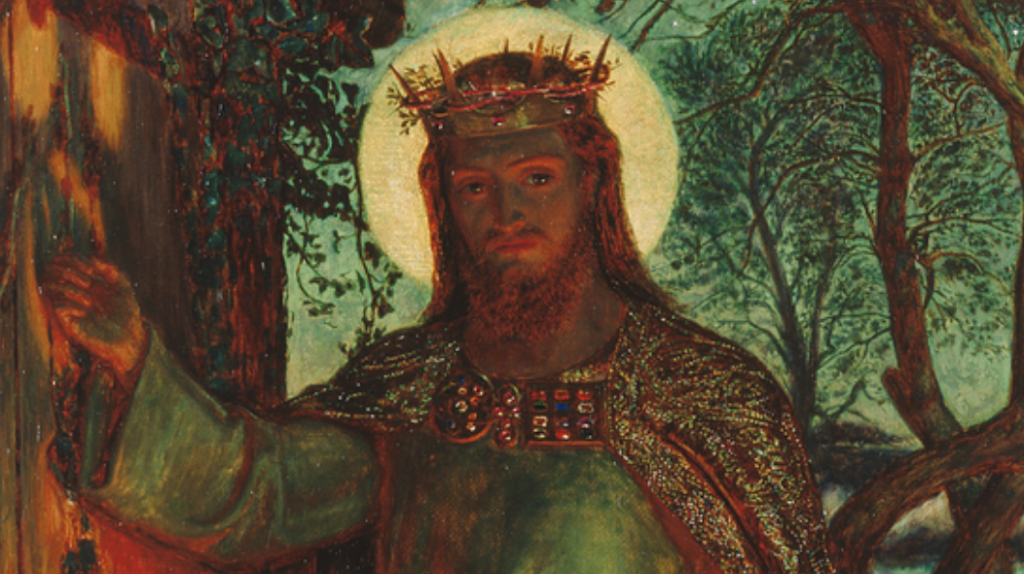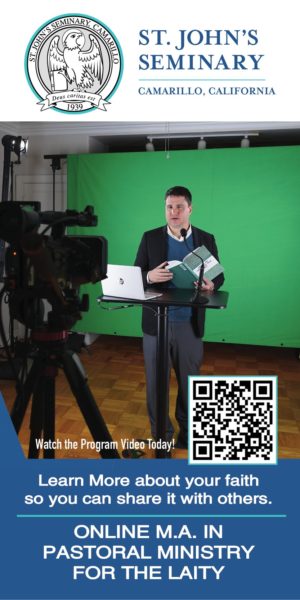Many years ago, in the context of a high school religion class, a very wise Benedictine nun gave me a template for understanding Advent that I’ve never forgotten. It is simply that Advent calls to mind three “comings” of Christ: the first in history, the second now, and the third at the end of time. Meditating upon each of these is a helpful preparation for the holy season upon which we are embarking.
Let us first look back. Fulton Sheen said that Jesus is the only religious founder whose coming was clearly predicted. And indeed we can find throughout the Old Testament indications and anticipations of the arrival of the Messiah. How often the New Testament authors use the language of fulfillment and insist that the events around Jesus occurred “kata tas graphas” (according to the Scriptures). They appreciated Jesus, this particular figure from two thousand years ago, as the one who brought to full expression all of the institutions of Israel. His rising from the dead demonstrated that he is the New Temple, the New Covenant, the definitive prophet, the Law or Torah in person. Furthermore, they understood that Jesus had brought all of history, in a very real sense, to its climax. The turning point of the human story is not, therefore, the emergence of modernity, not the revolutions of the eighteenth century, but rather the dying and rising of Jesus, the Messiah of Israel. If we turn Jesus into a mythic or legendary figure or we construe him simply as an inspiring religious teacher, we miss this crucially important truth. Every single New Testament author witnesses to the fact that something happened in connection with Jesus, indeed something so dramatic that all of time should be understood as falling either before him or after him. And so, during Advent, we look back with deep interest and spiritual attention to that first coming.
Christ came in time, long ago, but we must attend to the second dimension of Advent—namely, his coming to us in the here and now. We might think of that famous painting of Jesus knocking at the door. This is the Christ who presents himself every day, seeking entry into our hearts and minds. In his first coming, he appeared in the context of Israel. In this present-day Adventus, he appears through the sacraments of the Church, through good preaching, through the witness of the saints, through the Eucharist especially, and through the poor who cry out to be cared for. We recall his words, “Whatsoever you do to the least of my people, you do to me.” Now just as many rejected him when he came in history long ago, so, sadly enough, many reject him today. Can we see that the most important decision we will ever make—more important than decisions regarding job, family, livelihood, etc.—is whether we allow Christ to become the Lord of our lives? During the season of Advent, we are meant to stop and pay close attention. How is Jesus coming to us and how, precisely, are we dealing with his arrival?
And finally, Advent calls to mind Christ’s definitive coming at the end of time. One of the peculiar marks of Christianity is the belief that time is going somewhere. It is not just “one damn thing after another,” as the cynical adage famously has it, nor simply an endless cycle, nor the “eternal return of the same.” Rather, time has a direction, moving toward its consummation, when God will be all in all. The Church identifies this final culmination as the “second coming” of Jesus, and the Gospels speak of it often. Here is just one example from the Gospel of Luke: “Jesus said to his disciples: ‘There will be signs in the sun, the moon, and the stars, and on earth nations will be in dismay. . . . People will die of fright in anticipation of what is coming upon the world. . . . And then they will see the Son of Man coming in a cloud with power and great glory.’” What this remarkable language conveys is the conviction that, at the close of the age, the old order will give way and God will renew the great structuring patterns of reality. At this second coming of Christ, all of the seeds that had been planted throughout nature and history will bear fruit, all of the latent potentialities of the cosmos will be actualized, and God’s justice will cover the earth as the waters cover the sea.
The Church’s belief—and it governs the whole of its life—is that we are living in the in-between times; that is to say, in between the culmination of history in the cross and Resurrection and the definitive fulfillment of history in the second coming of Jesus. In a sense, the war against sin and death has been won, and yet mop-up operations continue. The Church lives in that middle zone where the final stage of the battle is still being fought. Pay attention, especially during the Advent season, to our daily Gospels at Mass. I think you’ll be surprised how often they reference the second Advent of Jesus at the end of time. I might offer just two well-known examples: “We proclaim your Death, O Lord, and profess your Resurrection, until you come again,” and “As we await the blessed hope and the coming of our Savior, Jesus Christ.” This is the how the Church speaks during the in-between times. Though we are beset on all sides by failure, pain, sin, sickness, and the fear of death, we live in joyful hope, for we know that history is going somewhere, that God has won the decisive battle and will win the war.
Therefore, this Advent, look back; look around; and look forward. With each glance, you will see the Christ who comes.

